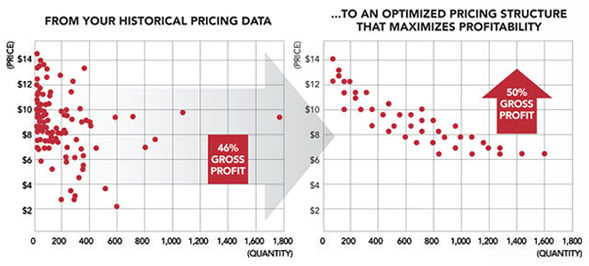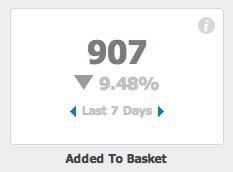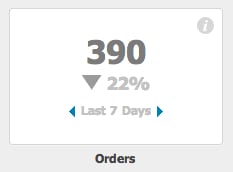How Will You Compete? Intelligent Ecommerce Pricing Strategies

How many banners have you seen advertising the “Lowest Prices Anywhere!”? Enough to know that the significance of such wording has been left devoid of all meaning? Low price advertising has pretty much been done to death. It’s still powerful if it’s true, but with the advent of online retail, you can nearly guarantee that there’s someone else out there selling the same thing you are, far below the price required for you to make a profit. Such is the consequence of global connectivity. Fortunately, there are still ways to stand out from your competition. Moreover, there are plenty of intelligent ways to develop a potent pricing strategy for your online store. Today, we’ll be going over some of the smarter methods of putting together a winning ecommerce pricing strategy
Specific Pricing Strategies
To begin with, let’s take a look at some of the most common and effective pricing strategies that are utilized by most online retailers. We’ll start off with some solid advice that you might find goes against conventional wisdom and is a bit counter-intuitive.Lower Isn’t Always Better
We introduced this concept above, but to reiterate it is very difficult to compete on low pricing alone. Getting in price battles with competitors is harmful to your brand over time. It leads customers to expect low prices, and when you raise them you’ll lose the business you thought was loyal. Instead of basing your business on the lowest prices, try to develop your own Unique Selling Proposition, or USP.A USP is what sets you apart from your competition. It could be better quality, an interesting shipping policy, excellent customer interaction, special offers, charitable endeavors, etc. Discover how you can promote yourself as different from your competition and build your promotion around that difference. This will take some research because a USP is by definition, unique. So need to determine what about your business is distinctive from the other competitors within your niche. If you aren’t standing out, it’s time to figure out a way to do so, post haste.
Price Skimming
A very popular short term pricing strategy, Price Skimming, can be defined as charging a high price in relative terms for a brief period of time, and then lowering the price when profits begin declining. Price skimming takes advantage of several market constants. First, there is always a section of the population willing to pay more to have a product sooner. A perfect example would be in the area of gaming. Console video games are often priced outrageously upon release, only to drop down to more manageable levels after several months of availability. That's because EA knows that I need the latest version of FIFA the moment it hits the shelves. Sneaky coorporate so and so's. Second, it works off of consistent demand. If the demand for your online product or service is especially volatile, price skimming probably isn’t the strategy for you.Another factor that leads to the imminent price drop in price skimming is the inevitable increase in competition that comes from a hot item. High prices mean high profits, and there are plenty of other online retailers that will want in on your share of the market. As competition increases, so too does supply. If supply increases, demand is inversely affected and will result in lower prices. So if you have a new product or service that quickly accrues a high volume of demand, it might be in your best interest to initially inflate the price so as to benefit from this strategy.
End Prices with a 9
This strategy is so stupid it hurts my feelings. However, it still works ridiculously well. For some strange reason, a psychological tick common in human beings that somehow transcends social and cultural boundaries dictates that prices ending in “9” are simply more attractive to consumers. People are more likely to buy a product ending in a 9 even if there are identical products offered at a lower price.I really just want to give the human race more credit than that, but facts are facts. 9 is just a magic mystic number that leapfrogs common sense and puts extra dollars in your pocket. Run some tests yourself if you just can't bring yourself to believe the Journal of Quantitative Marketing and Economics actually found the results in the study linked to above.
Premium Pricing
This is a strategy that can only be utilized if you have a significant advantage competitively. It's a lot like Price skimming, only it should work indefinitely. You price a product higher than market value because no one else has access to it. It only works so long as you have a monopoly. An example of Premium Pricing would be something like traveling first class on an airline.
Product promotions
This is fairly common one and easy to guess at as far as applicability goes. It's the old: buy one get one free, buy one get one half off, etc. set of offers. Special sales are the lifeblood of any business. They can drive up orders in a period of relative slowness, and bring in some much needed capital to keep you afloat when you need it most. Combine these promotions with segmented targeting to kick it up an extra notch. If you offer your customers a deal, (especially if it's one that's highly relevant to their interests,) they’ll be eager to pick up as much of your inventory as the delivery guy can carry.
Geographic Targeting
Depending on where you have to deliver your products, the shipping rates may fluctuate drastically. Not only that, but you may have to deal with higher taxes in a certain region, limits on bulk imports, and all sorts of other red tape. You can also take advantage of certain item's popularity in different regions. After all, if demand is higher you can always inflate prices accordingly and be assured of continued purchases.The only reason that any of these strategies are applicable is because of the concept we’ll be discussing next. It’s time to talk about…
Price Dispersion
Simply put, price dispersion is the current state of affairs in the world of online retail. It means that there is a vast range of differing prices set by multiple retailers for the same product. The reason for this is a constantly shifting marketplace. Retailers are regularly adjusting their prices in an effort to gain an edge on their competition. It could be that a shift in demand results in a higher price for a particular product. A retailer might then decide to take the original low price of a similar item (smartly advertised on the product page under a similar items heading) and boost its price to take advantage of the increased demand for the first product.What this means for you and your online retail business is you can take part in the shifting trends around the web. It’s a lot like playing the stock market. You’ll hedge your bets on the consumer demand and price fluctuations, and if you’ve set up the rest of your sales funnel in an effective fashion, you’ll be all set to receive a big boost in sales for your efforts.
Developing a Pricing Strategy
There are several steps you should take when initially producing your strategy for product pricing.- Examine your Competitors prices
- Consider offering a price match
- Free Shipping
- Look at what the online retail giants are up to
And there you have it. A step by step definition and plan for implementation of your very own pricing strategy. Go take what you’ve learned and fly high in the world of ecommerce. Whatever you do, don’t forget to check back for more helpful ecommerce advice in the Ashop blog.


.jpg)
This is the typical flow of products. First added to the basket, next to the number of orders, and finally to the conversion rate. These figures are part of what is used to calculate a product's cost per conversion.














Comment(s)0